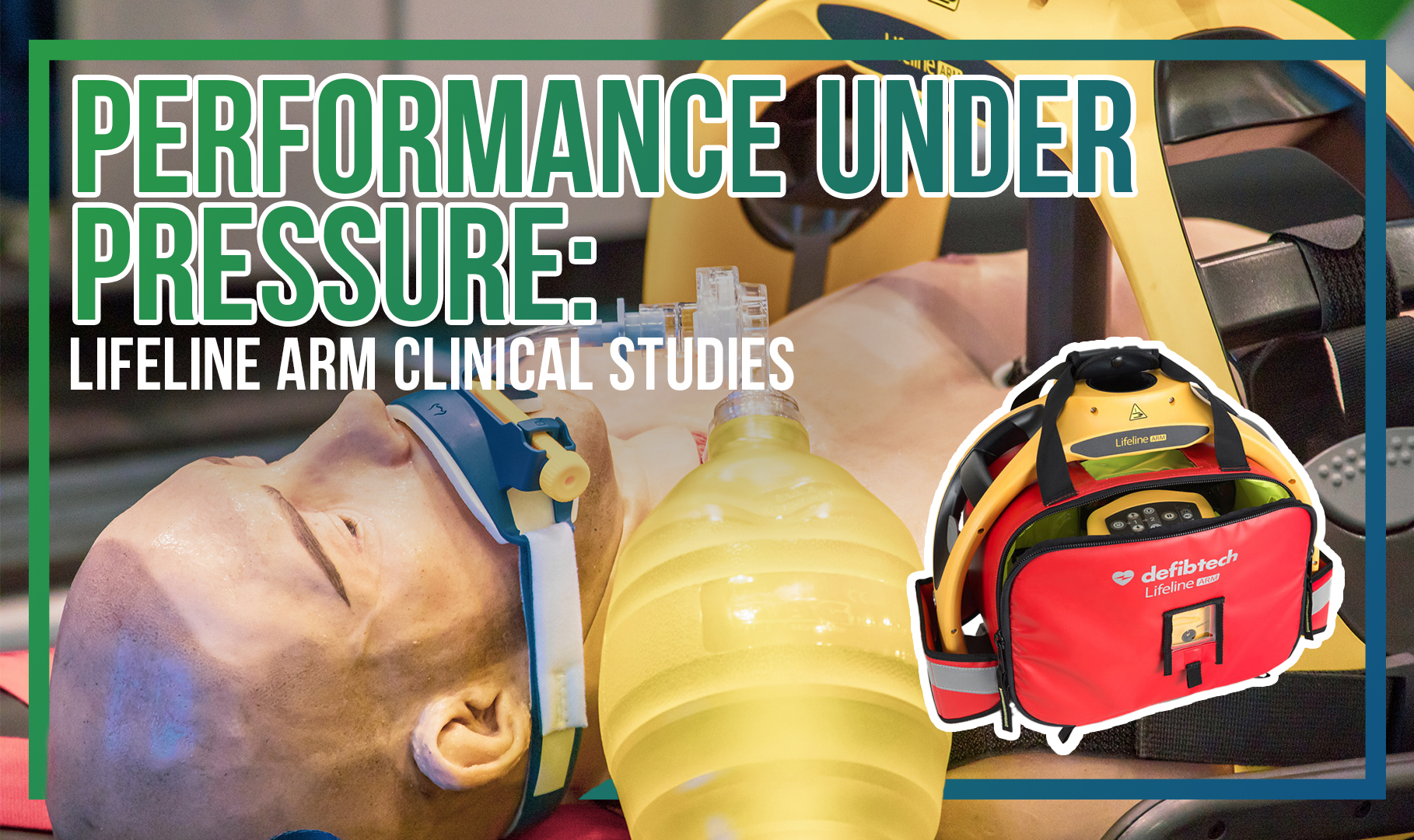Blog
Performance Under Pressure: The Defibtech ARM

At Master Medical Equipment, we like to show off the capabilities of life-saving equipment and clinical evidence showing their effectiveness. Today we are highlighting a clinical study showcasing the effectiveness of the Defibtech Lifeline ARM.
The Lifeline ARM is a product in the EMS industry gaining popularity for its ease of use, consistent quality compressions, and price point. To highlight how much the ARM can impact survival rates, we look at a study from Buncombe County EMS.
Buncombe County SCA Survival study:¹
In 2017, Buncombe County EMS began using the Defibtech Lifeline ARM. From March through October 2017, analysts captured accelerometer data measuring chest compression rate from the monitor/defibrillator records. Buncombe County EMS staff reviewed the accelerometer for all cardiac arrest cases when available.
Buncombe County shared its CARES (Cardiac Arrest Registry to Enhance Survival) report for this study, and found the survival rate for witnessed Vfib cardiac arrests across Buncombe County was 40% in 2017, compared to 32% in 2016. Integrating the Lifeline ARM Automated Chest Compression device into their protocol helped BCEMS raise their out-of-hospital sudden cardiac arrest rates by eight percent in just one year.
Qualitative reviews of the accelerometer graphs found that in 100% of the 64 cases where analysts captured data, manual CPR before applying the ARM appeared to be faster than the target rate range of 100-120. This means manual CPR did not meet the criteria for Quality Chest compressions, and manual compressions weren’t allowing for optimal chest recoil.¹
Quality of Manual vs Automated Chest Compressions:²
Another study was conducted using the Lifeline ARM. Researchers created a randomized crossover with a Training Simulator Manikin. Thirty-eight EMS nurses participated in the study, all having been trained in manual and mechanical CPR scenarios according to the ERC 2015 guidelines. The study compared manual chest compressions vs. the Defibtech Lifeline ARM device, using the Resusci-Anne manikin.
Experiment:
Participants performed 2 min of asynchronous CPR scenario. The first group started manual CPR; the second performed CPR using the Lifeline ARM. After completing the first CPR procedure, participants had a 20-minute break before performing CPR attempts using a different method.
The primary endpoint was the percentage of correct chest compressions (CCs) relative to the total number of compressions. Secondary endpoints were:
- Depth.
- The pressure of the point.
- Complete pressure release.
- Rate of chest compressions.
- Hands-off time.
The measurements were performed in a standard ambulance vehicle during transport on a preferred track of 5.0 km.
Results
Manual chest compressions were performed correctly less often than mechanical CC (29%vs. 93%. The median CC depth was deeper with LifeLine ARM 55 mm avg vs. 40 mm avg)
The results with the ARM were significantly better than manual CC for all the analyzed variables: correct CC, CC rate, correct CC depth, correct pressure point, and correct pressure release.
Even EMS systems recently implemented and trained on “pit-crew” high-performance CPR and utilizing real-time chest compression feedback devices. EMTs and paramedics perform manual chest compression at inconsistent rates, often faster than recommended, and must be deeper to provide quality CPR.
With Automatic Chest Compression Devices, EMS can easily integrate Mechanical CPR into their systems. Mechanical CPR with the Lifeline ARM can provide chest compressions at the AHA-recommended target rate more consistently than paramedics and EMTs performing manual CPR.
Purpose
Each year, as studies indicated, there are approximately 420,000 out-of-hospital cardiac arrests in the United States and 275,000 in Europe. The European Resuscitation Council and American Heart Association guidelines for cardiopulmonary resuscitation have recommended minimizing manual chest compressions.
Survival after cardiac arrest depends on prompt and good-quality cardiopulmonary resuscitation. Those guidelines recommended that rescuers should: push hard to a depth of at least 5 cm at a rate of at least 100 compressions per minute (but not over 120 per minute), allow full recoil of the chest between compressions, and also, and minimize interruptions in the chest compressions. Several studies have demonstrated decreasing chest compressions quality over time during CPR.
Conclusions
In manikin simulated controlled conditions, during transport with ongoing resuscitation, using the LifeLine ARM compared to manual chest compressions increased CPR quality. Further clinical trials are warranted to confirm our results. However, there is no denying the correlation between steady, consistent chest compressions and a rise in survival rates. The ARM allows for ease of use when assembling and compressing, making it one of the best options for your chest compression devices. ²
Have any questions about the Defibtech ARM? Our team is here to provide an answer! Request a quote here to learn about our best price or bulk discounts. Or contact us today to speak to our friendly and knowledgeable team at 866.417.2546 or salessupport@mmemed.com.
Master Medical Equipment is here to answer any questions about these life-saving devices. Our friendly and knowledgeable customer service department is here to help you find a solution! Call us at 866-468-9558 or check out our live chat feature on our website today!
¹Stace Horine, DO¹,², Jamison Judd, NRP¹, Ned Fowler, EMT-P², Buncombe County EMS, North Carolina; 2Mission Health, Asheville, North Carolina
²Szarpak L, Truszewski Z, Czyzewski L, Frass M, Robak O. CPR using the Lifeline ARM mechanical chest compression device: a randomized, crossover, manikin trial. The American journal of Emergency Medicine. 2017 Jan 1;35(1):96-100.
